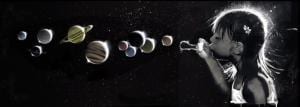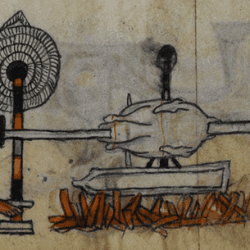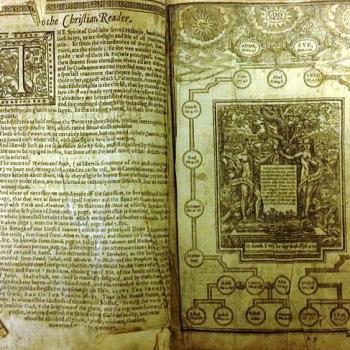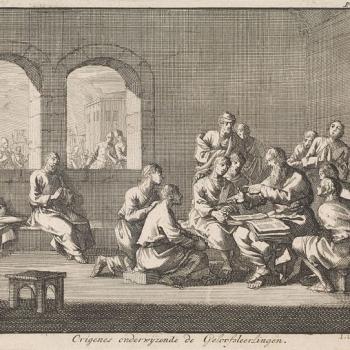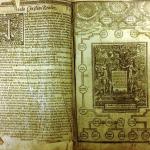AN INTRODUCTION TO THE ZEN KOAN
James Ishmael Ford
The Case
Zhaozhou visited a hermit. He asked, “Is anybody in? Anybody in?” The hermit lifted up his fist. Zhaozhou said, “the water is too shallow for a ship to anchor.” Later he went to a hermit, and asked, “Is anybody in? Anybody in?” The hermit also lifted up his fist. Zhaozhou said “Freely you give and freely you take away. Freely you kill and freely you give life.” And he made a full prostration.
Gateless Gate, Case 11
A while back, a friend referred to an important personal question he was pondering as an “honest koan.” That set me to thinking, once again, about how the word koan has mutated and its use expanded within American English. My friend, and a host of others, including Zen teachers, although it’s important to distinguish, Zen teachers who’ve not engaged in the discipline of koan introspection, have come to use the word to stand for “a particularly thorny question.” Actually, on occasion I’ve even seen koan downgraded to simply be a synonym for a “question,” difficult or not.
In several senses this use is not wrong.
First, language is mutable. It shifts and changes and is put to uses other than originally meant. However, one does need to be at least a little careful. The word “prevent,” for instance, as used in the 17th century English of the King James version of the Bible means “to lead forth.” Not understanding context can take us in the wrong direction. In this case, literally.
And, of course, words can have multiple uses, slightly different, for different purposes, or within different specialized disciplines. Look at any dictionary. There are for many, most words, a number sometimes a veritable host of different meanings.
And, here, the use of the word koan to mean question or especially thorny question is at base true enough.
The word comes from the Chinese gong an and translates literally as “public case,” as in a legal document. It is applied to exchanges between Zen teachers and students or other Zen teachers which can range from a word such as “Mu” or “No” to rather long narratives with a number of wato or “word heads,” each pointing to something particularly important on the Zen way. In fact, the American Zen master Robert Aitken suggests a koan is “a matter to be made clear.”
Here we get a bit closer to the heart of the matter. Here koans are set to open us up, to take us some place. Or, perhaps a bit more accurately, and using an old Zen saw, they become fingers pointing to the moon, pointers, giving us a direction for our own walking, our own place.
Koans are human creations. They are not from the gods. They are not channeled through a prophet. They are tools. And like that other tool, the axe, they can be used in any number of ways.
Although it’s also important to note they’re not merely expedients, either. Not exactly. Without our participation they’re simply ancient stories that usually seem oblique, at best. They can hang in the air like non sequiturs. But when we bring our hearts and our being to the project, then they are lamps casting light into the recesses of our lives, they become cups holding the coolest of water, waiting for the thirsty to drink.
With that Zhaouzhou’s visit to the hermits. He goes and asks at the door of the first hut, if anyone’s there? The response is a raised fist. Simple gestures like that are common in Zen’s koan literature. A raised fist. A single finger held up. Or, in a variation on that theme, simply turning around and facing the wall. And he exclaims how shallow! No boat can anchor there.
If that were all there were to it, it doesn’t seem to mean anything. But then the old worthy, Zhaozhou goes again to a hut and asks if anyone is there. Again, a hermit appears and raises his fist. But this time that action is met with what appears to be the wildest praise. Freedom. Life. Death. All in the moment.
Zhaozhou Congshen is one of the great ancestors of the Zen world. According to the tradition he was born at the tail end of the Eighth century and lived through nearly all of the Ninth. We see him in numerous koans, of the three great collections, he appears twenty times.
He’s also the source of what is sometimes called the First Koan, the one through which the majority of people practicing koan Zen will be begin. It’s brief. A student of the way comes to him and asks, “Does a dog have Buddha nature?” He responds, “No.” In Chinese this is rendered either as Wu or Mu.
As the official teaching of the Mahayana is that everyone has Buddha nature, we’re presented with an apparent conundrum. The student is given the koan and, as they say, hilarity ensues. Sometimes for years. On occasion for a lifetime.
Here with the two hermits we’re given another conundrum, at least it appears to be a conundrum. Of course, Aitken Roshi says actually it’s a matter to be made clear.
But what happens when we make it clear?
A whole spiritual life, in my opinion, requires more than koans. But, my goodness, they are useful! I can’t express how powerfully useful they can be. They have given me my spiritual life. Actually, that’s not quite it. Most accurately koans have given me my life.
No one is precisely sure where koans as a spiritual discipline come from. The scholar and Zen priest Victor Sogen Hori, believes they may have their distant origins within Medieval Taoist drinking games, where someone starts a poem and someone else must “match it” in a way acceptable to all concerned. This appeals to me and I like to repeat it as fact. It might well be.
It appears when the discipline first emerged a person was given one of these koan and would then ponder it for, well, pretty much a lifetime. Occasionally one would check in with a spiritual director, but largely the deal was the responsibility of the person who had taken it on within their life.
It became part of the basket of meditative disciplines practiced within the Zen schools.
Zen is another word that has taken a bit of a beating in popular American English usage. It appears in English mostly in the sense of relaxing, chilling out, with echoes of Hakuna Mata in the lion King, “It means no worries, for the rest of your days/It’s our problem-free philosophy.” Which is not Zen in any of its traditional uses.
Although…
Zen’s literal meaning is “meditation,” and it mostly refers to a cluster of schools that began in China and eventually immigrated to Korea, Japan, Vietnam and now to various Western cultures. It the West, thanks largely to Alan Watts, it has come to have a secondary meaning as the awakened life. You run into that allover social media, which is generously populated with self-appointed Zen masters. From there we got the easy slide to no worries for the rest of your days, problem-free philosophy.
But Zen, the Zen of China and Korea and Vietnam and Japan, that Zen is a school of Buddhism, schools, where meditation is the primary discipline, and koans are very much part of that meditative discipline. That human discipline with grubby roots in Taoist drinking games.
The early Zen masters took the stories of their tradition and offered them in the spirit of that game. Pretty soon teachers began using a number of koan both as subjects for talks and as objects of meditation, picked out for the particular needs of particular students. Eventually they would take on the shape of a curricula, a set number a student was expected to engage and “pass.” Contrary to what you may have heard, there are, very much, right and wrong answers.
My own definition of a “real” koan, a koan as used within the koan schools of Zen is that a koan is a statement about reality and an invitation to a response. In practice this response is given to a koan Zen teacher who then affirms or does not the response. At the beginning mostly the responses fall into the “does not” category.
Lots of no on the Zen way. With the tantalizing if frustration conflation of that no in the dokusan room and the no of the dog.
Now koans are also used as the subject for conversations. Many “pure” Soto teachers who do not use them in the sense I’ve been describbing, do use them, both as objects for talks and as the subjects for discussion within small groups. Recently here in the West teachers trained in what I’d consider the more precise usage have also encouraged people to engage them in this way, as subjects for discussion. No harm, no foul. All worthy. Koans can be and often are doors into a dream worlds. And there’s much to be learned there in that place. But, then, there is that direct pointing. And beyond dream worlds, koans point to the deep secret of who we are.
Which is also why it’s worth noting that actual competent guidance can be very important on the way to that intimate place. So. Some distinctions might be helpful. The conversational koan engagement has come in some circles to be called “koan study” and that more focused and demanding discipline, where one can pass or not, you know the place with right and wrong responses as “koan introspection.” Some distinction regarding these two ways is important, I feel. And this is as good as any.
Koans nestle within the great practice of shikantaza, just sitting. We begin with just sitting. Perhaps we engage our breath. We taste the mysteries of this moment and are invited to let go of our judgments. And, just sitting can be a koan. “Sit down and become Buddha.” How’s that for a koan? And, for some of us at some point curricular koan introspection is called for. We engage. A year. Ten years. Twenty. And then eventually we return to just sitting, or something very, very close. Sitting down and becoming Buddha. This place is the field of possibility, the womb of the universe, the realm of awakening. Fancy words for something terribly important for us to find.
At first the koans were collected in spiritual biographies of prominent Zen masters. By the thirteenth century anthologies of koans began to be published in China. The Gateless Gate, the Blue Cliff Record and the Book of Serenity principal among them. Since then new anthologies have been published perhaps in every generation. For example, the Entangling Vines collection first published in Japan in 1689 ranks with those earlier collections as central for many on the koan way.
By the time Hakuin Ekaku was born in Japan at the end of the seventeenth century, Zen masters were using long lists of koans that students were expected to “pass,” either by taking up the traditional collections one by one, or through “in-house” lists that basically recapitulated the same cases. Hakuin would come to be associated with this systematization and gave his name to it, Hakuin Zen is a synonym for koan Zen in Japan. In fact, the two principal streams of koan introspection study that inform pretty much all koan introspection practice in Japan today would be named for two of his students’ students.
As a small aside, there is a modern systematization in the West not directly informed by Japanese koan work taught by successors of the Korean master Seung Sahn. In my cursory exploration of it, I am impressed. It is clearly influenced by the Hakuin system, but precisely how is starts to get elusive.
The number of koans one tradditionally engages is pretty substantial. The traditional, mythic term is seventeen hundred. In matter of fact most koan introspection lists are somewhere in the vicinity of four or five or six hundred cases. Although they can be sliced and diced, remember those various points to be found in some koans, many koans, and each could be counted as one. Anyway, one encounters a lot of koans in koan introspection practice. Ten, twenty, thirty, forty years to work through them for most of us. If the formal training is completed. I took twenty to complete the formal part of koan practice. The word “complete” there no doubt should have scare quotes around it.
So, what does one encounter in a koan?
People with a little time on their hands have attempted to categorize koans. Hakuin suggested five categories. Others more or fewer.
One of the things I like about Hakuin’s listing, is how he introduced what he called “nanto,” which seems to translate as “fucking hard” koans. I think he identified eight of the many hundreds he worked through. I find it interested that Hori Sensei seems to have found ten or so of the eight. And so, we don’t appear to have a tight grasp on this. Somehow I like that. One Zen master suggested these eight or ten or whatever were particularly hard koans for Hakuin. Suggesting, and it has been my experience, that we each will find our own Nanto as we walk this koan way. Starting with the first one…
Me, I suggest two kinds. First koans, koans that are concerned with helping us find our place within our original boundlessness. And then koans that explore various aspects of boundlessness and particularity – the great dance that is our lives. Over and over again. The process is one of discovery and forgetting, and discovering again. Growing deeper in the dark soil of our practice.
This is powerful stuff.
It is about who we really are.
And that who we are is expressed most succinctly in the Heart Sutra as “form is emptiness, emptiness is form.” To make sure we get that, it goes on. “Form is exactly emptiness, emptiness is exactly form.” Bloodless words, perhaps. But pointers to the life force of the universe, and the secret of our human hearts. We, each of us are boundless. And we are each of us just what we see and touch, smell, taste, hear. And of course, what we think about those things. A child blowing bubbles, each one a world.
We present into this world in all the complexity of who and what we are. Formed out of genes and experiences, filled with passions and life and hurt, deep hurt, open wounds. And joys, of course. Small and large. All of it. Just as it is. And, each of these things are moments, confluences of time and space, which exist within and as those moments, before shifting and changing. All of it, every blessed bit, wildly open.
And that wild openness is exactly this world.
Awakening is realizing these words are pointing to something we can experience.
I hope, while koan becomes an English synonym for thorny problems we don’t forget they are also an invitation from our ancestors, to look deeply into our own hearts, somewhere past questions, and even thorny questions, to the place where all questions arise and where all questions, at least those of meaning and purpose, of who and what we are, may be resolved.
And so, the koan as an invitation from the heart to the heart. It takes us from a world filled with thoughts and notions into a dream realm. And from there to, well…
Zhaozhou goes to that hermit and asks, who are you? The hermit avoids the trap of words, and just presents.
Zhaozhou laughs and says, shallow water. Is that a rebuke? Or is it something else? Then Zhaozhou goes to a hermit. We usually fill in with the word “another.” That doesn’t seem to be in the original text. Just a hermit. This hermit? Another hermit? Does it actually matter? Traps and snares all along the way for the unwary. He asks the same question. He gets the same intimate response. And he laughs and says, freely giving life, freely taking life.
Do we hear an echo here? Form? Emptiness? Life? Death?
The invitation becomes a door. A dream. A key. A gate. Is it closed? Is it open?
Turning the key. And. And. Walking through, rolling through, sometimes crawling through.
On occasion grabbed by the heart and dragged through.
Self? Other?
Just this.
Just this.


